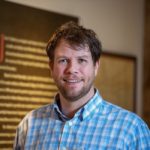“Everything we do before a pandemic will seem alarmist. Everything we do after will seem inadequate.”
-Michael Leavitt, Former Secretary of Health and Human Services

Imagine a forest fire. Here, the trees are thick. Fire rages and jumps from tree to tree faster than a person can run. Deer and rabbits race from the flames, terrified. Firefighters are coming, but the outcome is clear. They are too late, and devastation is evident.
Younger, healthier trees will survive — they are shorter, their crowns less impacted by flame — but the old growth will be consumed. The pillars will fall, and the forest will never be the same.
Now imagine a different part of the forest. Here, the trees are thinner, more widely spaced. The fire rages, but the flames do not race. The trees are too far apart for the flames to move so easily. Every now and then, flames make the jump, but slowly. The animals are long since gone, well ahead of the fire.
Just as a gnarled and ancient tree is threatened, the first firefighter arrives. And then another, and another. Brush is cleared away, space is created, branches are removed. This tree, unlike its counterparts in other areas of the forest, will live.
Now, understand that right here and now, the virus is the fire and we are the trees. It is here, my friends. We cannot see it, but it is among us as I write. We may choose to space ourselves, or we may not. Our vulnerable and our elderly may die, or they may not. We as a community and a society are making this choice, consciously or not.
This is flattening the curve. Or not.
A home experiment for you: Place an empty gallon milk jug on the counter. Pour 3 gallons of water into it. The jug represents a hospital; the water, patients. This is Italy today. Doctors and nurses are faced with terrible choices. Who lives and who dies? There are not enough ventilators and not enough beds.
Italians behaved two weeks ago like Americans are behaving now.
Do an internet search on “Italy Coronavirus,” and read. You’ll learn about patients on cots, on the floor, wrapped in Mylar blankets like you would find at a marathon finish. They are in a warehouse, not a hospital.
In two weeks, this is your hospital. These are your neighbors and your grandparents. There are only so many doctors, so many nurses, so many ventilators. Vaccines are not coming. Medication is not coming. If we do not change, if we do not act — right now — we will replicate the Italian experience. This is already happening in the western United States.
No more bars. No more restaurants. No more birthday parties. No more playdates.
I have been asked why. Why do I say not to panic, and then describe the forest fire and demand that you stay home?
The answer is simple. We, as a community and as a society, have a responsibility to each other. We have a social responsibility. We must not panic, and we simultaneously must worry about the vulnerable among us. Social responsibility is not a phrase reserved for corporations. We must understand that having a beer with a buddy could mean someone’s grandmother will die. A playdate with neighbors could mean someone’s grandfather will die.
Of course, they are not all grandparents. The mortality rate in China for people in their 40s is 0.4%. That’s one in 250. How many people in their 40s are in your community? Which father or mother in your community will not survive until summer?
What will you do?
Every day I witness our doctors, our nurses, and our hospital staff. They carry a collective sense of dread. Some verbalize it and some do not, but you can see it in their faces. They laugh nervously. They are frantic about lab results. They count and recount masks, gowns. The fatalism, the gallows humor, the moments of panic worming under the surface.
For us, it feels like a dream. For us, it is not a fire but a great wave. We stand on the beach and watch the tsunami on the horizon. It is coming. We watch and we wait. How big will it be? How many will it take when it hits us? Will any of us be swept away as well?
You can help.
Stay home.
Joshua T. White, MD, MBA
Chief Medical Officer
For more information about coronavirus, visit giffordhealthcare.org/coronavirus-covid-19, cdc.gov or healthvermont.gov. Additionally, you may call 2-1-1 with questions.
###
Gifford is a community hospital in Randolph, Vt., with family health centers in Berlin, Bethel, Chelsea, Randolph, Rochester, and White River Junction; and specialty services throughout central Vermont. A Federally Qualified Health Center and a Top 100 Critical Access Hospital in the country, Gifford is a full-service hospital with a 24-hour emergency department and inpatient unit; many surgical services; a day care; two adult day programs; and the 30-bed Menig Nursing Home, which was named by U.S. News & World Report as one of the best 39 nursing homes in the country in 2012. The Birthing Center, established in 1977, was the first in Vermont to offer an alternative to traditional hospital-based deliveries, and continues to be a leader in midwifery and family-centered care. The hospital’s mission is to improve individuals’ and community health by providing and assuring access to affordable, high-quality health care in Gifford’s service area.
Media Contact:
Maryellen Apelquist
mapelquist@giffordhealthcare.org
802-728-2284

